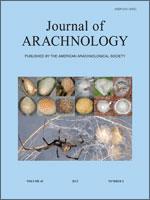Trapdoor spiders are challenging to sample using active searching methods because of their cryptic burrowing behavior. This poses problems for ecological studies and for gathering the data needed for conservation assessments. Pitfall trapping provides an alternative method that targets adult males as they wander from their burrows in search of females. Using pitfall trapping requires considerations of the timing of sampling within the year, the effects of environmental conditions on spider activity, and sampling effort required for a high probability of detecting species that are present at a sample site. To investigate these factors, pitfall-trapping surveys were conducted at several localities in Gauteng Province, South Africa. The results showed that trapdoor spider activity occurs in all seasons. Each species has a discrete period of activity ranging from a few weeks to several months in duration. Some species are active at different times of the year at different localities. Statistical analysis showed soil moisture as the only significant predictor of activity from amongst seven environmental variables, and the survey results indicate that trapdoor spiders are active under wet conditions following rainfall. Between two and seven nights of trapping are required for a high probability of detecting all species present and active at a site, using the trap design employed for this study with ten trap arrays per site. Trapping must be repeated at regular intervals throughout the year in order to obtain a near complete inventory of the species assemblage. The number of species collected ranged from two to eight per site, with most sites having six or eight species. Pitfall trapping yielded 1.2–3.0 times the number of species obtained by active searching at sites where both methods were employed. Guidelines for planning pitfall-trapping surveys of trapdoor spiders are presented and future research directions are discussed.
How to translate text using browser tools
1 August 2013
Pitfall trapping for surveying trapdoor spiders: the importance of timing, conditions and effort
Ian Engelbrecht
ACCESS THE FULL ARTICLE

The Journal of Arachnology
Vol. 41 • No. 2
August 2013
Vol. 41 • No. 2
August 2013
conservation
detection probability
Mygalomorphae
phenology
sampling




